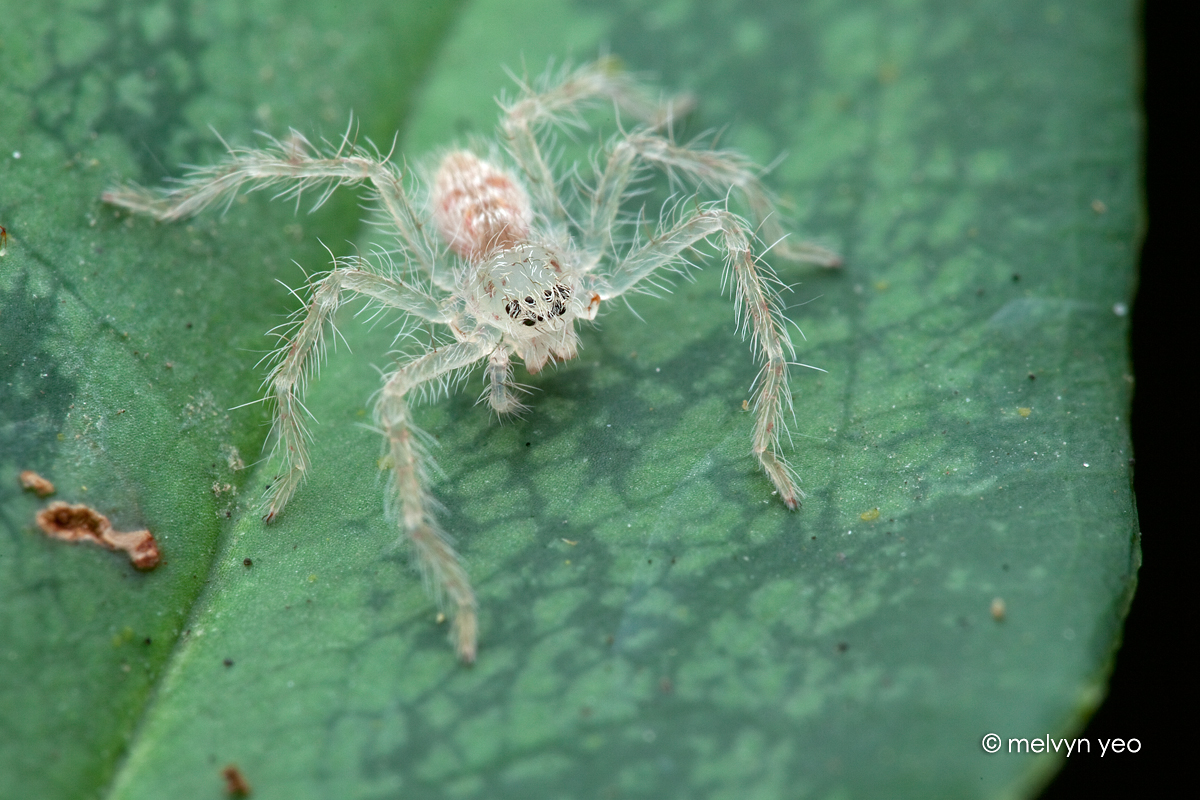ShopDreamUp AI ArtDreamUp
Deviation Actions

Wallpapers
If you love wallpapers in different styles, you are in the right place. We offer wallpapers that you have never seen anywhere before, (mostly for phones). Support my work by contributing to my tip jar. Help me stay motivated to publish more artwork so you can access exclusive artwork! Thank you.
$5/month
Suggested Deviants
Suggested Collections
You Might Like…
Description
Love its hairy white body  Taken at night in Singapore forest.
Taken at night in Singapore forest.
Quote from en.wikipedia.org/wiki/Huntsman…
Sparassidae (formerly Heteropodidae) is a family of spiders known as huntsman spiders because of their speed and mode of hunting. They also are called giant crab spiders because of their size and appearance. Larger species sometimes are referred to as wood spiders, because of their preference for woody places (forest, mine shafts, woodpiles, wooden shacks). In southern Africa the genus Palystes are known as rain spiders or lizard-eating spiders.[1] Commonly they are confused with baboon spiders from the Mygalomorphae infraorder, which are not closely related.
More than a thousand Sparassidae species occur in most warm temperate to tropical regions of the world, including much of Australasia, Africa, Asia, the Mediterranean Basin, and the Americas.[2]
Several species of huntsman can use an unusual form of locomotion. Carparachne aureoflava from the Namib desert uses a cartwheeling motion, while Cebrennus rechenbergi uses a flic-flac motion.
Sparassids are eight-eyed spiders. The eyes appear in two largely forward-facing rows of four on the anterior aspect of the prosoma. Many species grow very large – in Laos, Heteropoda maxima males attain a legspan of 250–300 mm (about 10–12 in). Persons unfamiliar with spider taxonomy commonly confuse large species with tarantulas, but huntsman spiders can generally be identified by their legs, which, rather than being jointed vertically relative to the body, are twisted in such a way that in some attitudes the legs extend forward in a crab-like fashion.
On their upper surfaces the main colours of huntsman spiders are inconspicuous shades of brown or grey, but many species have undersides more or less aposematically marked in black-and-white, with reddish patches over the mouthparts. Their legs bear fairly prominent spines, but the rest of their bodies are smoothly furry. They tend to live under rocks, bark and similar shelters, but human encounters are commonly in sheds, garages and other infrequently-disturbed places. The banded huntsman (Holconia) is large, grey to brown with striped bands on its legs. The Badge Huntsman (Neosparassus) is larger still, brown and hairy. The tropical or brown huntsman (Heteropoda) is also large and hairy, with mottled brown, white and black markings. The eyesight of these spiders is not nearly as good as that of the Salticidae (jumping spiders). Nevertheless, their vision is quite sufficient to detect approaching humans or other large animals from some distance.
Quote from en.wikipedia.org/wiki/Huntsman…
Sparassidae (formerly Heteropodidae) is a family of spiders known as huntsman spiders because of their speed and mode of hunting. They also are called giant crab spiders because of their size and appearance. Larger species sometimes are referred to as wood spiders, because of their preference for woody places (forest, mine shafts, woodpiles, wooden shacks). In southern Africa the genus Palystes are known as rain spiders or lizard-eating spiders.[1] Commonly they are confused with baboon spiders from the Mygalomorphae infraorder, which are not closely related.
More than a thousand Sparassidae species occur in most warm temperate to tropical regions of the world, including much of Australasia, Africa, Asia, the Mediterranean Basin, and the Americas.[2]
Several species of huntsman can use an unusual form of locomotion. Carparachne aureoflava from the Namib desert uses a cartwheeling motion, while Cebrennus rechenbergi uses a flic-flac motion.
Sparassids are eight-eyed spiders. The eyes appear in two largely forward-facing rows of four on the anterior aspect of the prosoma. Many species grow very large – in Laos, Heteropoda maxima males attain a legspan of 250–300 mm (about 10–12 in). Persons unfamiliar with spider taxonomy commonly confuse large species with tarantulas, but huntsman spiders can generally be identified by their legs, which, rather than being jointed vertically relative to the body, are twisted in such a way that in some attitudes the legs extend forward in a crab-like fashion.
On their upper surfaces the main colours of huntsman spiders are inconspicuous shades of brown or grey, but many species have undersides more or less aposematically marked in black-and-white, with reddish patches over the mouthparts. Their legs bear fairly prominent spines, but the rest of their bodies are smoothly furry. They tend to live under rocks, bark and similar shelters, but human encounters are commonly in sheds, garages and other infrequently-disturbed places. The banded huntsman (Holconia) is large, grey to brown with striped bands on its legs. The Badge Huntsman (Neosparassus) is larger still, brown and hairy. The tropical or brown huntsman (Heteropoda) is also large and hairy, with mottled brown, white and black markings. The eyesight of these spiders is not nearly as good as that of the Salticidae (jumping spiders). Nevertheless, their vision is quite sufficient to detect approaching humans or other large animals from some distance.
Image size
1200x800px 742.23 KB
Make
Canon
Model
Canon EOS 5D Mark II
Shutter Speed
1/160 second
Aperture
F/16.0
Focal Length
100 mm
ISO Speed
200
Date Taken
Jan 23, 2015, 11:41:24 PM
Sensor Size
7mm
© 2015 - 2024 melvynyeo
Comments12
Join the community to add your comment. Already a deviant? Log In
Poor thing lost 2 legs.
































